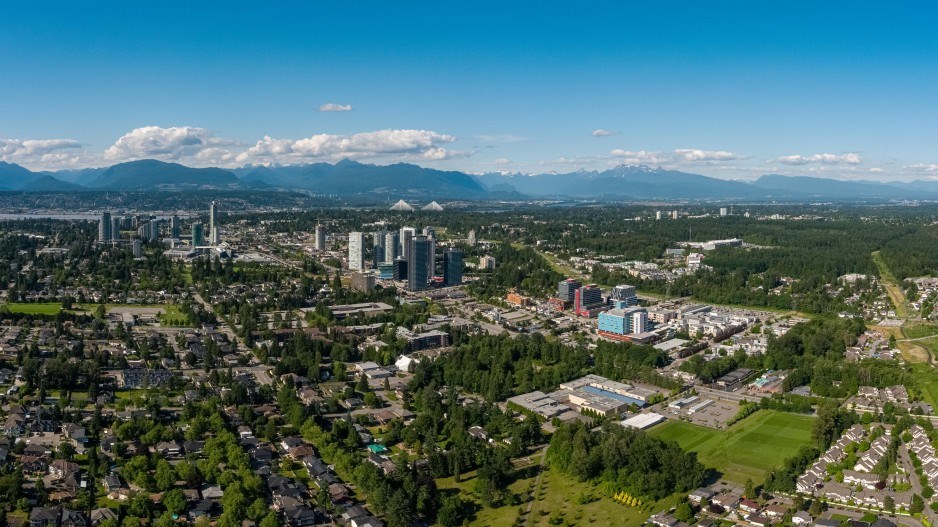While Vancouver attracts the vast majority of international attention in terms of cities in British Columbia, Surrey has been quietly, consistently accumulating victories that mark it as an economic and social force to be reckoned with.
Cases in point: Surrey adds approximately 800 to 1,000 residents per month, which puts it on track to become the province’s largest city by 2041; MoneySense ranked it the number one Canadian city in which to buy real estate in 2019; the City issued a record $2.29 billion in building permits in 2019; and the Real Estate Investment Network expects Surrey’s housing market to outperform those of all other B.C. cities until at least 2023.
None of this comes as a surprise to Elizabeth Model, who, in her role as CEO of the Downtown Surrey Business Improvement Association (DSBIA), has had a front-row seat to the city’s exponential growth for more than a decade.
Model believes an ideal confluence of circumstances — location, relative affordability, economic and development incentives, and an expected extension of Skytrain between Surrey and Langley — has led the city to its current status as one of the most thriving in the province, if not all of Canada.
“Land-mass wise, you can fit Burnaby, Richmond and Vancouver into Surrey. And we also have ALR [Agricultural Land Reserve] land,” says Model. “So, we have land availability, we’re more affordable. And also, the people wanting to live and work south of the Fraser have found they want to make their home here.”
Despite the economic impacts felt worldwide due to the pandemic, Surrey continues to conduct robust business in terms of development, and it seems only to be gaining momentum.
“As of June 21, 25 major development applications are under initial review consisting of approximately 27 high-rises and 21 low-rises,” says Model. “And what has been approved right now, as of June 21, is 37 major projects in the City Centre consisting of 43 high-rises and 24 low-rises.”
Speaking specifically about the City Centre, Model acknowledges it’s “a work in progress,” not least because “building a brand-new downtown within an existing city is a challenge in itself because all of the blocks are so big in Surrey that everything is being changed.”
But, she brightly adds, great strides are being made, particularly in the health and technology sectors. “There’s going to be a new hospital [planned for a site on 180 Street; construction is expected to start in 2023], the Jim Pattison Outpatient Care and Surgery Centre, the new Surrey Memorial Hospital Critical Care Tower that was built by the province a few years ago, and then the private enterprise of the Lark Group — they’ve just finished their third of eight buildings surrounding the hospital.
“The other thing we can’t forget is Simon Fraser University — the number-one comprehensive university in Canada — and the new sustainable-engineering building that was opened in 2019. And, of course, the province also introduced the quantum computing institute [as part of SFU] worth $17 million.”
In recent years, additional economic generators for City Centre, says Model, have been the Civic Plaza campus of Kwantlen Polytechnic University, the boutique Civic Hotel, a relocated City Hall, and the City Centre library branch.
“It’s a combination of things that the DSBIA has championed. People are starting to recognize, with the development happening here, that we’re growing into a [bona fide] downtown.”
Turning her thoughts to Surrey’s short- and long-term future, Model again emphasizes that “the development of the medical and technology sectors will be huge for downtown Surrey. The province has promised a new medical school [at SFU] — that economic impact will be enormous. And we’re also looking at more hotels, an arts and entertainment district, more restaurants.
“As well, the city is very cognizant of developing a central business district where the land is just designated for business and not mixed-use. And then, further to that, the development of smaller blocks and cycling lanes. So it’s very much a forward-thinking city.”
All in all, says Model, “We have huge opportunities for anyone looking to invest here, build a business here, have a family here. I only see positive things happening in Surrey.”
For more information, visit surreycitycentre.ca.




